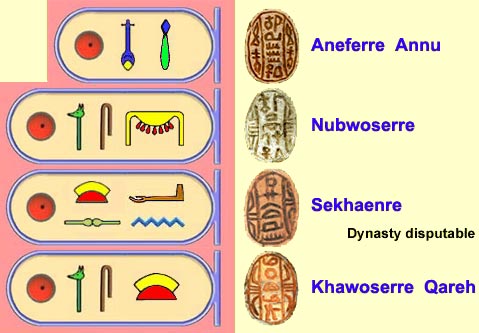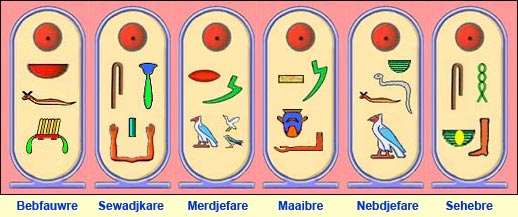Dynasties 15 - 17
c. 1655 - 1547 BC (108 years)
By Ottar Vendel
A century of foreign rule
 |
The name originates from the Egyptian "heqa-khase", which means "rulers of foreign lands". They were basically living on cattle breeding and in Egypt they had to be used to the annual inundations which made them adopt agriculture. After a good hundred years another Hyksos wave came from the coast areas of Palestine and established themselves in a more organized way and founded the 15th dynasty. They made the fortified town of Avaris (Egyptian: Hatuaret) their capital (see map right).
The Egyptian dynasties 13 from Xois and 14 from Itj-tawy (se map) were now ended and the new rulers of Avaris were acting in a more expansive and military way and met just weak recistance from the Egyptians.
A big advantage in combat was the Hyksos introduction of horses, which was a new animal to the Egyptians.
At most the Hyksos had full control down to the town of Hermopolis (exept for a very short military raid reaching down to Thebes) and thus divided the country into two parts with the Egyptian dynasties 16 and 17 ruling the south.
They brought their own gods but never imposed these on the indigenous people and the language in the administration continued to be Egyptian. The only Egyptian god they took in to their religion was Set, who they identified as their own god of storms.
They seem to have adopted Egyptian manners and laws, and had trade relations with the Minoans and Babylonians. They were recognized by later Egyptians and listed as legitimate kings, but no tombs from these half a dozen rulers have been found and their names were all non-Egyptian. The few remains of graves from Hyksos-people have revealed their custom of the dead be followed by parts from cattle (bones and horns) in a crude shaft with no visible signs above ground. The six kings claimed themselves pharaohs with all the tradition attached to that title and for one hundred years they ruled in peace and prosperity.
No open hostility seems to have occured between the two parts of the country until the last 20 years of a century when the Egyptian kings from Thebes started a liberation war and drove out the Hyksos from the Nile Valley.
Dynasty 15
Six Hyksos kings ruled for 108 years c. 1655 - 1547 BC.
One theory states that at least 3 of the first kings ruled for almost 30 years and were followed by Khyan and Apepi who hade reigns of about 40 years each. At the very end Khamudi should have been just a year on the throne before he was defeated by the Egyptian army and driven out of the country. The text below is a general proposal based upon conclusions from scholars over the years. In 1997 the Danish Egyptologist Kim Ryholt suggested a short chronology for the dynasty.
A small amulet of ivory showing an unnamed Hyksos(?) king with a hooked nose holding a small lying figure by the head. This has been interpreted by some as meaning the occupants holding the Egyptians in slavery. | 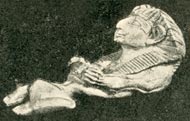 |
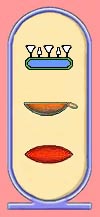 Sark (Salk) |
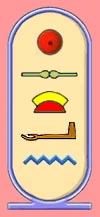 Sehaenre |
When they founded the first Hyksos dynasty it is clear that this Asian people had been nomading in the country (the Delta) for a good many years. He resided in Memphis and is credited for making Avaris the new capital and fortified stronghold. This event was at hand at the ver middle of the 1600s BC, when he had been in office for about five years. The northern part of Egypt was now to be ruled by Hyksos until the end of their era some 110 years later. His reign is estimated to have been about 8 years around 1655-1647 BC.
Manetho gives him 19 years on the throne and he is usually identified with a king called Sark (or Salk) mentioned only once in a list made by priests from Memphis (cartouche above left). An attached throne name, Se-ha-en-Re (cartouche above right), means - "The one introduced by Re", might be his. Remnants from his reign are few, only his name written on three occasions on blocks of stone taken from larger monuments. Where these originally stood is not known.
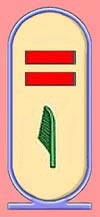 Sheshi |
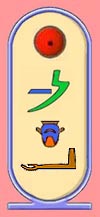 Maa-ib-re |
His throne name Maa-ib-re (seen within a cartouche in picture right) and meaning - "Seeing in the Heart of Re". Hundreds of physical evidence of his existence have been found throughout the Middle East: 394 scarab seals and 2 seal impressions. He is noted in Manetho's list as the second king of dynasty 15 and for a reign of 44 years, a duration that has been rejected by modern scholars. Today these figures are adjusted to a period in rule of 3 to 14 years depen- ding on who has come up with the theory.
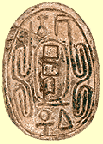 Seal of Sheshi |
He is also put among the first kings of the 14th dynasty together with Ahotepre and Quare (Ryholt 1997). These two latter are also well attested for and have left dozens of scarab amulets from their reigns. Despite all remains none of the three rulers can be put in place with a hundred percent accuracy.
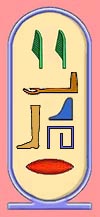 Yakub-Her |
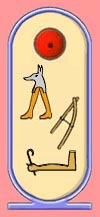 Meruserre |
Practically nothing is known from the reign of this king (sometimes called Yakobner) and it's doubtful if he has left any remain beside being mentioned in king list written 1500 years after his time on the throne.
His Aramean name is related to the biblical Jacob, and has made some groups see this as "evidence" that the Hyksos people were the Israelites. This theory has of course no scientific value. He is by some thought to fit into one of the gaps in the 14th dynasty along with some 11 other rulers with Hyksos names not present in the Canon of Turin. He seems in that case to place at the end of that dynasty, and if he is from dynasty 15 his reign might be 8 years around 1634-1626 BC. His remains are from scarab-seals only (about two dozens) found mostly in Egypt, but also a few from Palestine and a single one from Nubia in the south.
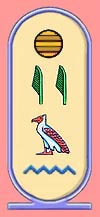 Khyan |
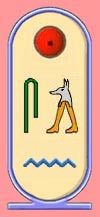 Seuserenre |
His influence reached beyond the kingdom in Northern Egypt and his name is known from a wide area in the eastern part of the Mediterranean region. Greek name forms were: Yannas, Jannis, Iannes, Joannis etc. His reign: 25 years around 1625-1601 BC.
Manetho ascribes him a 50 year period. His name (in his own Hyksos language) means "Born in (the month of) Khiyar" and other forms are: Khiyaran, Khajran, Khayan.
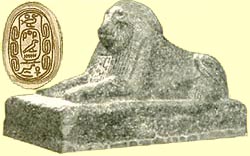 Lion statuette and seal with Khyan's name. |
His name with the title "Ruler over the foreign lands" has be- en found on at least 38 seals from scarabs plus some pieces of artefacts from remote places like Knossos in Crete, Bagdad in the great flood plain of Mesopotamia and Bogazkoy (capital of the Hittite people) in the mountains of Anatolia in today's southern Turkey.
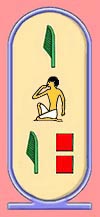 Apepy |
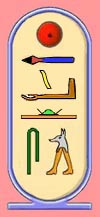 Auserre |
Apepi is mentioned in two papyri, a list from priests in Memphis and many pieces of architecture which give the names of his sisters Tani and Tcharydjet and daughter Harta. There is strong indications pointing to the fact that he was an usurper with no relation to the rulig line of Hyksos kings (his name was Egyptian) or domestic royalty. He is believed to have been a well educated ruler who got into war in his older days, possibly tricked by forces within his own government. He didn't improve his relationship with his southern neighbor the Egyptian king Tao II in Thebes by sending him a very provocative letter (today in the British Museum) where he has a complaint which was, so say the least, really odd.
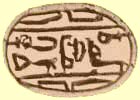 Seal of Apepy |
He wrote that he couldn't sleep at night because he was disturbed by the snoring and roaring from pharaoh Tao's hippopotami in Thebes 800 km to the south! After this message king Tao is believed to have taken up arms against him in a small scale and if the letter was intend as a provocation - it worked. Thereby the hostility was initiated and later escalated (when Apepy was dead) to a massive confrontation.
During his reign a change to the worse was probably at hand for the Egyptian public and the peaceful times ended. There are evidence that he (Ryholt 1997, pp. 145-148) looted pyramid tombs from the 12th and 13th dynasty and took the goods to Avaris. Furthermore, when retreating downstream his troops seem to have practiced the tactics of "the scorched earth" and by this turning the Egyptian population against the Hyksos for good.
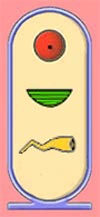 Nebkepeshre |
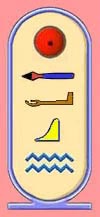 Aqenenre |
For some unknown reason he changed all his titles three times during his long reign. Thus it's believed that he also is the ruler behind the name Neb-khepesh-re "Re is the lord of strength" (in the cartouche left), be-lieved to be from his first period in office, and (right) Aqenenre "The strength of Re is great" as being taken later during his reign. This made some scholars think some of these titles was from another Apepy (they called the 2nd), but it was the same ruler.
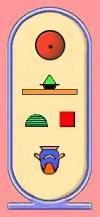 Ib-hetep-re |
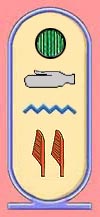 Khamudy |
He was militarily defeated and eventually had to withdraw his people from the Nile Valley after living there for generations.
His possible throne name was Ib-Hetep-Re, (as seen within a cartouche in picture left) and is not connected to him with certainty.
The Egyptian king Ahmose from Thebes started a full scale war against him in year 11 of his reign and after that the big town of Heliopolis was captured. He then saw the beginning of the end to the long Hyksos rule. In the year after Khamudy negotiated with the Egyptians about the withdrawal of the Hyksos army from his capital Avaris and most of the Delta, but the determined Egyptians didn't take his terms and concurred the town after a siege and three attacks.
Khamudy had foreseen what was coming and had moved his people along the coast up to southern Palestine in advance and the Egyptian military forces raided that area for several years afterwards to prevent a Hyksos comeback.
Many details from this dramatic scenario are found in contemporary documents and many of them (not to say all) were probably written under supervision of the victorious Egyptian king himself. Therefore a dose of skepticism is handy when valuing them.
Few large remains are left from Khamudy's reign, but an exception is an obelisk which he erected near Avaris where it was discovered under the sand.
Dynasty 16
1663 - 1555 BC (108 years)
alt. 1660 - 1580 BC (80 years)
This dynasty is either thought to have been ruling as vassals to the Hyksos dyna-sty 15 and then located around the town of Pelusium in the eastern Delta (the traditional theory), or being an independent line of Egyptian kings ruling from Thebes in the far south and finally taken over by the Hyksos for a short period, (the more recent theory). The latter point of view combined with a parallel dyn-asty at the neighboring Abydos makes it possible to deal with more known kings as possible candidates. If the latest theory is correct the two rulers with foreign sounding names presented below should be put in another dynasty.
In 1997 the Danish scientist Kim Ryholt suggested a choronology for dynasty 16.
The Canon of Turin has 15 lines for this dynasty with 7 names partly visible and large gaps. Those readable are considered to be, in sequence:
Sekhemresementawy Djehuty, Sekhemresewosretawy Sobekhotep III, Sekhem-resankhtawy Neferhotep III, Sankhenre Menthotepi, Sewadjenre Nebiryraw I,
Nebiryraw II, Semenre, Sewoserenre Bebiankh, Sekhemreshedwaset.
Then follow five rows with lost names and in this position fits a group of kings well known but not placed. These are (according to the Abydos theory):
Dedumose I-II, Mentuemsaf, Mentuhotep VI, Senwosret IV.
These five names are pressed into the last less than ten years of the dynasty thought to have been around the 1560s BC. Manetho writes that the Hyksos invaded Egypt when king Tutimaios (Dedumose I) sat on the throne. When he studied the old files,
User-anat, Semqen, Zaket, Wasa, Qar, Pepi III, Nebmaatre, Nikare II, Aahotepre, Aaneterire, Nubankhre, Nubuserre, Khauserre, Khamure, Yoam, Amu
and possibly others.
Two rulers are presented below and they both have hyksos names.
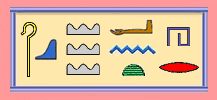 |
The text in square right says: Heqa Khaswt Anat-Her, meaning "Ruler of the foreign (desert) lands - Anat-Her, (also Anat-Har).
The staff is the sign for rule and the three-topped mountains were for foreign (desert) countries. The two hieroglyphs at the far right in picture above mean "moun-tain" ("harru") in the Canaanite language transcribed to "her". It was common in Canaanite names in Egypt from the 12th dynasty through the first Intermediate period. It had a divine significance in the aspect of "great".
This inscription has only been found once on a scarab and his reign has been estimated as a short period perhaps 1585-1580 BC.
It's not quite sure if dynasty 16 is right place he should be put in to, because the title was used by kings in both the 14th and 15th dynasties. Possibly he can place into the gap in the Turin Canon right at the beginning of dynasty 14, where four rulers with similar name forms (among them Yakbim below) are thought to fit in. One name found has a similarity to his - Aper-Anati, possibly from the early dyna-sty 15 (Ryholt 1997).
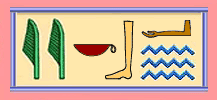 |
This king had a West Semitic (Ammorite) name like his predecessor and there are different ways to transcribe the sounds. Two other suggestions: Yakbemu and Jacbaam. His name has not been found on bigger artifacts like stelae or rests of buildings, only on small scarab-seals. On the other hand they are as many as at least 112 with his name written on them and found in a wide geographical area from deep down in Lower Nubia in the south (2) to Palestine in the north (7). The remaining 103 are all of unknown provenance like the only cylinder seal known of him. A fair guess might be that the bulk of them have their origin in Egypt itself.
He's not on Manetho's list and has been identified, with rather fair accuracy, by the throne name (prenomen) Sekhaenre. His reign was of unknown duration in around 1560-1565 BC.
According to the modern theory that dynasty 16 was an Egyptian line of kings from Thebes, Yakbim with his foreign name must be placed elsewhere, maybe among the first five kings in the 14th dynasty where the Turin Papyrus seems to have a large piece missing.
The Abydos Dynasty
c. 1650-1630 (1575) BC.
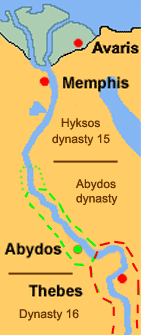 |
When the Hyksos captured Memphis around 1650s BC. and founded the 15th dynasty, the regions of Abydos and Thebes had their own (Abydos dynasty and 16). After 20 years records tell about clashes between Hyksos and Thebes indicating that the Abydos was conquered by the Hyksos just as Thebes later was, for a brief period.
Marionette kings might still have been in office there when Thebes (now as the 17th dynasty) started the libe-ration war against the Hyksos in about 1575 BC. This would have given the 16 presumed rulers short reigns just like indicated in the Turin Canon below.
Earlier works have usually ignored these kings, finding no proper place to put them, but three have left crude stelae in the Abydos area and their names clearly point to a local connection.
None of their tombs has been found so far (year 2002).
(line - name - reign)
| 1 | Woser(...)re | ... |
| 2 | Woser(...)re | ... |
| 3-10 | Names lost. | ... |
| 11 | (...)hebre | ... |
| 12-14 | Names lost. | 2, 2, 4 years |
| 15 | (...)hebre? | 3-4 years |
| 16 | (...)webenre | 3-4 years |
in the Abydos region.
1) Wepwawemsaf Sekhemreneferkhaw
2) Pantjeny Skhemrekhutawy
3) Snaaib Menkhawre
Dynasty 17
c. 1660-1560 BC. or c. 1580-1550 BC.
Manetho's (Eusebius) has 104 years and 4 kings: Saitis 19, Bnon 40, Archles 30 and Aphophis 14. Accordng to Africanus the time was 151 years and 43(!) kings, probably taking up rulers from other dynasties by mistake.
From Thebes the kings controlled southern Egypt independent of the Hyksos in the north. Between them might have been another line of rulers for some time (the Abydos Dynasty). It seems to have been peaceful period for most of a century until a 17th dynasty king started a war to "liberate" the rest of the country. This was achieved after campaigns in periods over about 20 years.
The pharaohs had new designed so called saff- or row-tombs in the hillside at Dra Abu el-Naga in Western Thebes, possibly with small (8-15 meters square) sharp agled pyramids built in the enclosed yards. Today (2001) almost nothing is left but crude remains of their grave chambers in the hillside. In 1997 the Danish Egyptologist Kim Ryholt suggested a chronology for dynasty 17.
Rahotep, Sobekemsaf I, Skehemre Sementowy Thuty, Sankhenre, Djehuti, Mentuhotep VII, Nebiryerawet I-II, Mentuhotep VI, Nebirau I-II,
Semenenre, Suserenre, Shedwast, Antefs VI-VIII,
Sobekemsaf II, Tao I, Tao II, Kamose.
 Sekhemrewahkhaw |
 Rahotep |
Rahotep is well known in this respect as the one who restored the damaged walls of the Temple of Abydos to increase the city's capa-bility to repel the expect attacks from the Hyksos advancing upstream from the north. A stele from Koptos tells that he also made restorations of the local Min temple. A private stele bears his name as do some scarab amulets. Historians have agreed on that this period, though its unstable politically situation, was a peaceful and rather flourishing period de- spite what some kings may have stated. This is probably following the tradition to make themselves great leaders (and bold warriors) like the kings from the past.
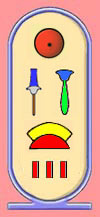 Sekhemenre Shedtawy |
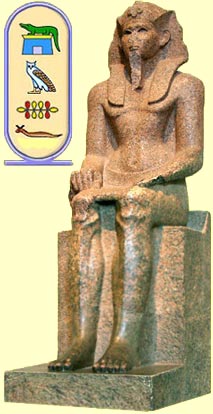 |
Besides the truly great red granite statue at right from the British Museum, a fine statue of him is also at ex- hibition in the Egyptian Museum in Cairo.
In addition a fine stele from Karnak in Thebes and two private ones from Thebes are from his reign and bears his name, and so does a relief from Abydos. In all a dozen remnants.
These objects are by far the most prominent finds of any king from this period which mostly has left questions intended for those studying this dusky part of Egyptian history.
Pharaoh Sobekemsaf was buried at Dra abu el-Naga in Western Thebes in a saff-tomb (see the Antefs of dynasty 11) and by coincidence we know a lot about it though it was empty (and with time reused by others) when it was entered in the late 1880s.
A papyrus referring to a trail in court concerning the Egyptian state against tomb robbers a good 450 years(!) after the king had died, gives a statement from one of the accused. He tells the court how he and a friend tunnelled through the bed- rock with their copper tools and finally reached the grave chamber where they robbed the king's and queen's mummies for gold items weighing 14.5 kg
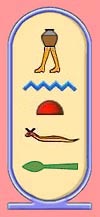 Antef the Great |
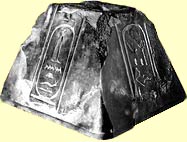 The capstone from the pyramid of Antef VI from Dra Abu el-Naga in Western Thebes. |
The brothers Antefs VI and VII both had small pyramids made at the west bank of the Nile right across the Karnak temple at Thebes. Judging from the very steep angle from the found capstone (in the picture above right) the monuments would have had a base of just eight to nine meters. They were placed in the yard of their saff-tombs going into the mountain side, where a handful of kings were buried at the end of the 17th dynasty, a tradition originating at the end of the 11th dynasty 400 years earlier.
 Sekhemre Wepmaat |
This tradition of chambers in the bedrock was passed on to the next dynasty when royalties made their tombs hidden in uninhabited valleys in the wilderness. Though very few remains (around six) of Antef's have survived, half of them are quite substantial. Besides his pyramid capstone (above), both his sarcophagus and canopy chest are today at the Louvre Museum in Paris. He may have been just the second oldest son to Sobekemsaf I since his follower (and brother) on the throne called himself (or was called by others) "The Elder".
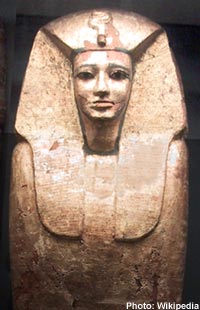 Antef VII's mummy coffin. |
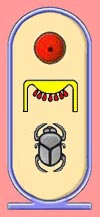 Nubkheperre |
His throne name Nubkhep-erre (seen within the car-touche right) says: "Golden is the Manifesta-tion of Re".
The middle sign is a neck-lace, meaning gold and the scarab at the bottom (cre-ator god Kheper) was to be very popular and used by almost every king in the dynasty to come next. Using the throne name is the best way to separate all Antefs since there are different ways of numbering them.
His burial coffin is today seen in the British Museum transported from his saff-tomb at Dra Abu el-Naga in West Thebes, where he also had a small pyramid for decoration in the courtyard. His reign would have been five years around 1571-1566 BC.
His name has been found on several architectural elements in Abydos cut in as reliefs in columns, stelae, and blocks. Two obelisks from a small pyramid outside his tomb were lost in the Nile while transported, but his sarcophagus was saved and is now in the British Museum.
During this short period of time the royal family included Sobekemsaf I and his sons Antefs VI-VII plus Antef VIII who was a son of a sister to those whose name isn't known. The Egyptologist Beckerath suggest that Antef VII could have been murdered, but by whom and or for what reason we do not know. If a struggle for the throne was the motif we can expect his namesake below (a son of his sister's) to be among the suspected, but this is pure speculation.
 |
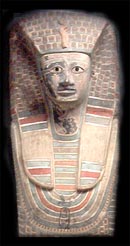 Antef VIII? |
His long throne name Sekhemre Her-whor Maat, meaning “The Powerful Re Who Is Satisfied, Maat", is seen within the cartouche right. This was added to the coffin text in an different hand writing after the personal no-men, indicating that the box original-ly had belonged to another Antef.
He might thus have been buried in a rock cut tomb made for someone else at Dra Abu el-Naga in west Thebes.
Knowledge about his reign is almost nothing except that he clearly had a short period of around a year on the throne.
The Danish Egyptologist Kim Ryholt has put forward that he possibly was a co-regent to his predecessor (and uncle) Antef VII since an inscription on a block of stone from Koptos seems to contain both their names in a pharaohnic fashion. The Egyptologist Beckerath tells that he might have been murdered, if so a rare way of death for a pharaoh. In short: he was an insignificant ruler and the brief remains of his are subject for a debate among scholars and interpreted in diff-erent ways.
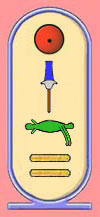 Sekhemre Shedtawy |
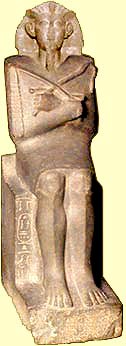 Sobekemsaf II (head reconstructed) |
His throne name, Sekh-em-re Shed-tawy (seen within a cartouche in the picture right) means: "Powerful is Re, rescuer of the Two Lands".
When he sat on the throne is uncertain, but an estimation from scholars of today points to a period in office of about six to seven years around 1566-1559 BC.
He is very well attested for from around twenty remnants and among others is a fine small statue(tte) of him (headless but reconstructed in picture left). A relief at the base of a temple in Karnak is depicting him paying tribute ny making offerings to the war god Mentu-Re.
He has several rock inscriptions at the Wadi Hammamat passage in the Eastern Mountains, plus scarabs and two small obelisks of which one has an unknown location today (year 2002) and the other one is at exhibition in the Egyptian Museum in Cairo.
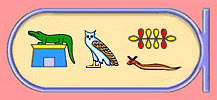 Sobekemsaf |
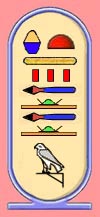 Tao I |
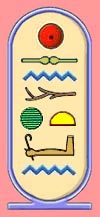 Senakhtenre |
The name form Táa is used by Egyptolo-gists since the 1980s but if it's proper for this king is far from sure, but the name sound-ing like Siamun plus his name to the right is clear. Thus it's quite possible that there never was a Tao the 1st and the only pha- raoh who held this name is the well att- ested follower below. If this ruler was re- lated (some say father) to the king Tao II coming next, is anybody's guess. Those in favor have a queen to him called Tetisheri who then would be the mother to a new ruling family, unrelated to the Antefs.
Not very much (i.e. nothing) is known from his rule but three remnants are known where two are giving his name:
1) A stamp seal found at Abu el-Naga. 2) His throne name Senakhtenre within a cartouche written on an offering table from Thebes and now exhibited in the Archaeological Museum in Marseilles. 3) A depiction of him within a tomb at Thebes and probably from after his time.
The duration of his reign is not clear, but his time in office is likely to have taken place around the years 1559-1558 BC and possibly lasted for about a year.
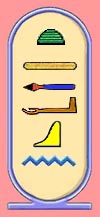 Tao II |
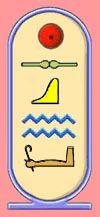 Sekhenenre |
He was foolish enough to take this bate (if it was meant to be) and thus started a military campaign northwards up the Nile, though it seems that he was not at all prepared for such a bold task. He was just ruling a short strip of the Nile north and south of Thebes, and the rest of the country was under the administration from Avaris in the delta, and in the south Nubia was indepen-dent. The Egyptians have had a prosperous time for generations back with no wars, and the cities had military garrisons loyal to the government up north. Thus Tao's military ambitions to be the pharaoh over the whole of Egypt wasn't a success and he obviously was killed during a battle within the first two years of this struggle.
He (or more likely his son) had put the additional "the brave" to his name, and he surely was in a way, with a big dose of presumption.
His mummy was found at Thebes and shows that he had a violent dead in some way. King Tao's about four years in office are rather well known and positioned in time around the years 1558-1554 BC. The military struggle was continued by his son who became the next pharaoh. Remnants from his own life time are about a dozen and the best known are his sarcophagus from Thebes and a statue of him, now in the Louvre Museum in Paris. From after his death his name has been found on stelae and literary remains which all tell about his (in reality very modest) deeds as supreme commander in the start of the war against the Hyksos.
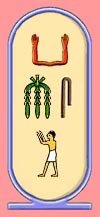 Kamose |
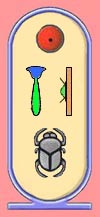 Wadjkheperre |
The old Hyksos king Apepy tried to make an alliance with the Nubians in the south and engage Kamose in a two-front war but it didn't work out as planned since his letter was picked up by the Egyptians. Khamose's progress in his military maneuvers was substantial as territory was concerned, and he reach as far north in the Nile Valley as the Faijum basin after three years. There he halted and sent the snatched letter back to the Hyksos king, and withdraw back to Thebes for some reason. Maybe it was because of his own health, because he died the next year in about 1550 BC after just four years in power. He was buried in a simple tomb at Thebes and the course of his death is not known.
The war of "liberation" was hard to fulfill since the Egyptians in general north of the Theban territory, above the modern town of Quena, were quite satisfied with there life and had no hostility against the Hyksos king far up north. This might explain why it took at least a further 12 years before it all was over during the next pharaoh, and "civil war" is a better term for this twenty year long atrocity.
Kamose made several stelae telling about his victories on the battlefield, and is attested for by items in his secondary tomb at Dra Abu el-Naga, like a famous ceremonial axe head, scarabs seals, pedants and jewelry among other things.
His follower on the throne was his brother (or possibly nephew) Ahmose I who "liberated" Egypt after an additional dozen years of combat.
This ruler was the founder of a new dynasty (the 18th), and he would start the golden era in Egyptian history called - The New Kingdom but that's another story.
on dynasties 13-17
This period is by far the most dusky in Egyptian history and many attempts have been made to stow all kings (names) from dynasties 13-14 into the limited space of time available. It's tempting to suggest more parallel dynasties to swallow them all up like Ryholt in 1997 suggesting an Abydos dynasty. But he claims dynasties 16 and 17 to have been in succession and no exra space is thus given.
Many names are still (year 2008) not possible to put in sequence or dynasty, and various king lists made by scholars have their own solutions. Suggestions (mostly from early Egyptology in the late 1800s) have tried to eliminate many kings by claiming them to be fictional, or dead ancestors(!) to the invading Hyksos.
Notable is that later Egyptians accepted these names as real kings alongside the great pharaohs of the past and put them into the official king lists.
In the dynasties 13 and 14 put together, the last 45 years are shared by 50(!) kings, making their reigns an average 10 months. This is of course not believable, and no theory has so far given an explanation to this odd fact.
Hopefully coming archaeology, computerized calculations etc. will spread more light over this shadowy period.

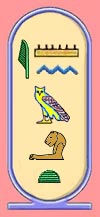
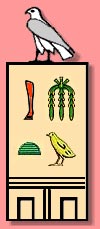
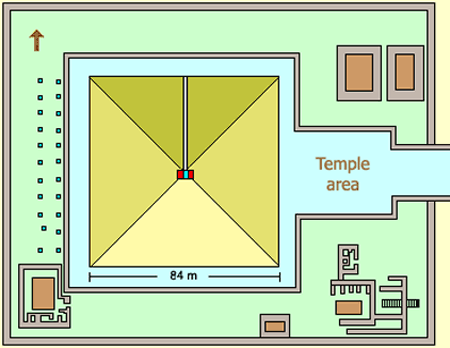
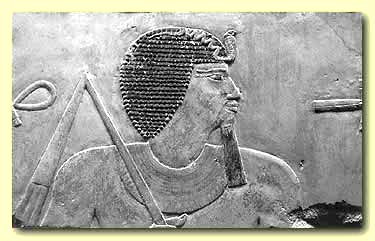
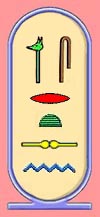
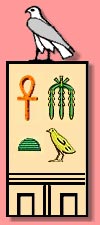
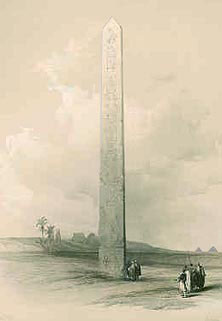
 The valley temple is not exactly located and the long causeway, now hidden under the sand, still awaits a proper investigation.
The valley temple is not exactly located and the long causeway, now hidden under the sand, still awaits a proper investigation.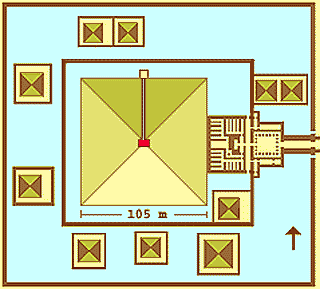

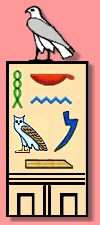
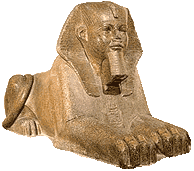
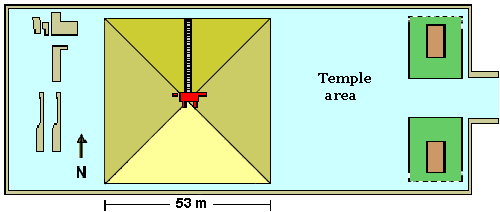

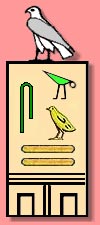
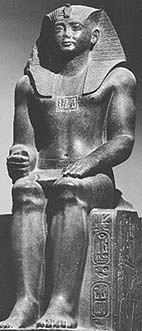 He built his pyramid at Lahun (Illahun) close to the Faiyum and it differed in some ways compared to similar monu-ments. Its innermost core is an adjusted natural limestone rock which was completed with masonry of mud brick. The entrance was not at the traditional north side (see picture below), but hidden under the pavement to the south. At the same side are four shaft tombs belonging to members of the king's family. Three of them were found robbed when excavated in 1914, but the fourth revealed a first class sensation.
He built his pyramid at Lahun (Illahun) close to the Faiyum and it differed in some ways compared to similar monu-ments. Its innermost core is an adjusted natural limestone rock which was completed with masonry of mud brick. The entrance was not at the traditional north side (see picture below), but hidden under the pavement to the south. At the same side are four shaft tombs belonging to members of the king's family. Three of them were found robbed when excavated in 1914, but the fourth revealed a first class sensation.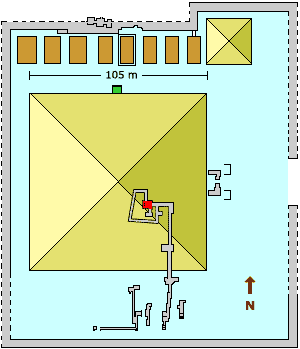
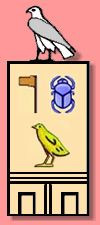
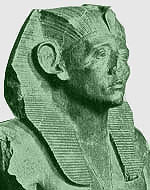
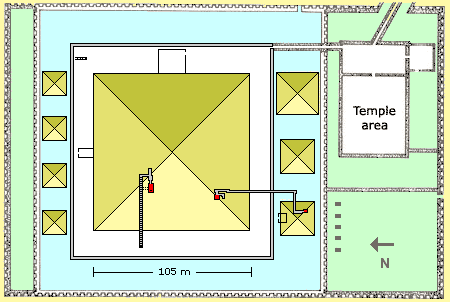
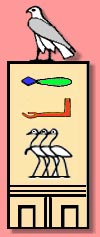
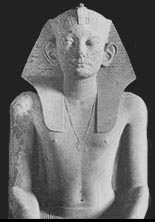
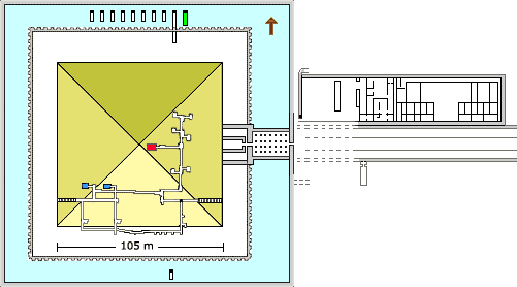
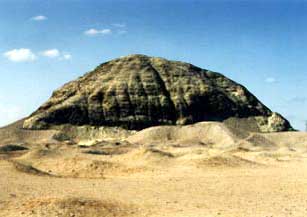
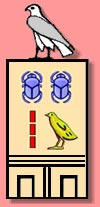
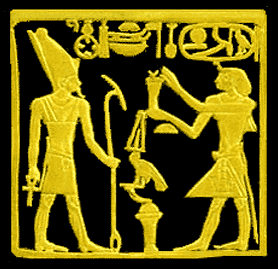
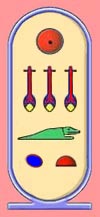
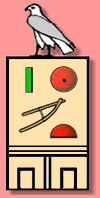
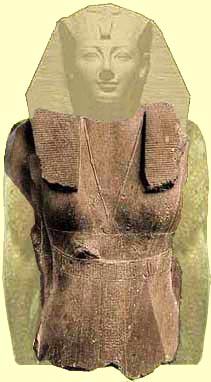
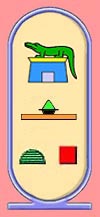
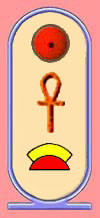

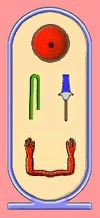
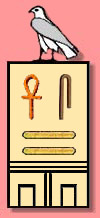
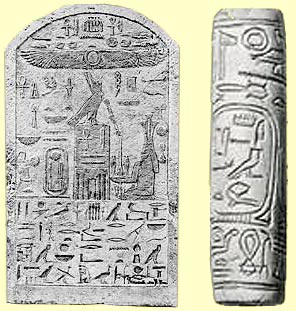
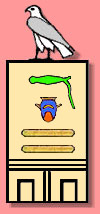
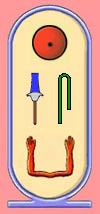
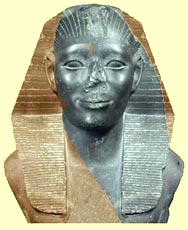


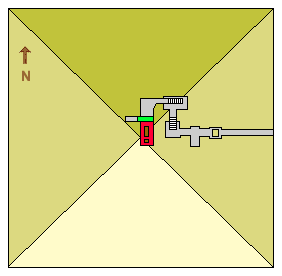

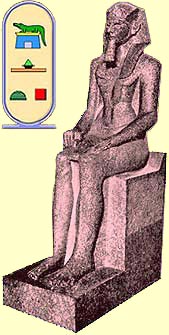

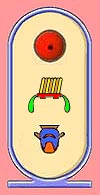
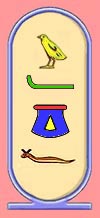
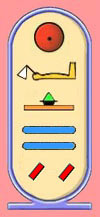

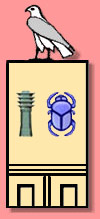
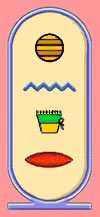
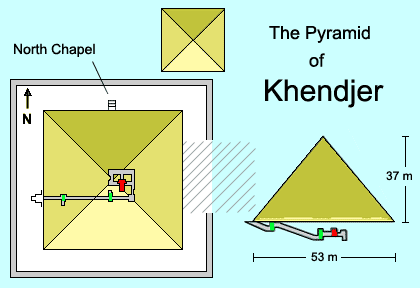
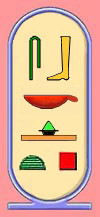
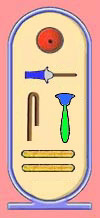

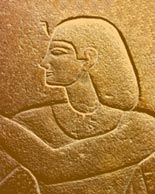
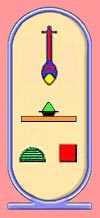
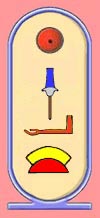

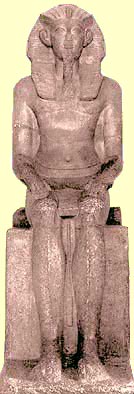
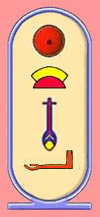
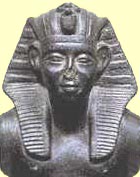
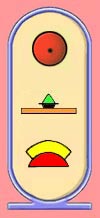
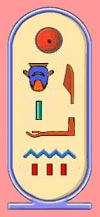
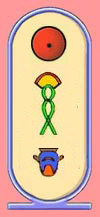

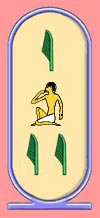
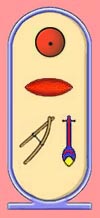

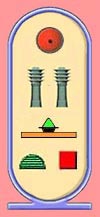
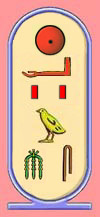
 One possibility might be that Dedumose had to capitulate to the foreign enemies and his followers were marionette rulers, but this is just a suggestion of many from this politically very complicated period.
One possibility might be that Dedumose had to capitulate to the foreign enemies and his followers were marionette rulers, but this is just a suggestion of many from this politically very complicated period.